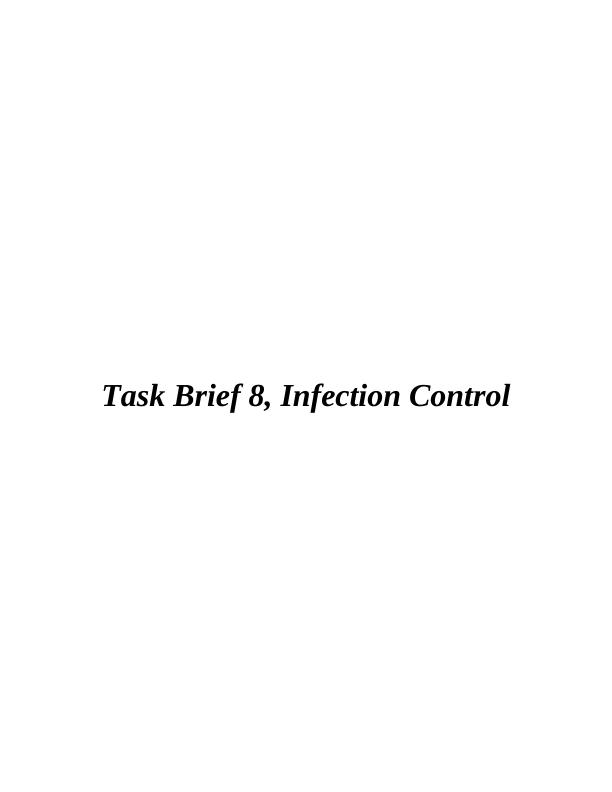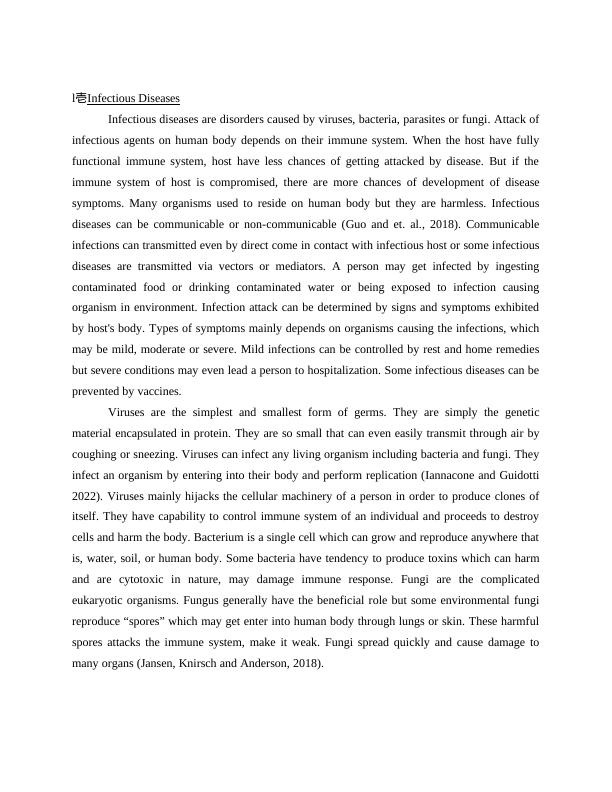Infection Control: Understanding Infectious Diseases, Prevention and Symptoms
7 Pages1437 Words401 Views
Added on 2023-06-08
About This Document
This article provides an overview of infectious diseases caused by viruses, bacteria, parasites or fungi. It explains how the immune system plays a role in preventing and controlling infections, and discusses the importance of vaccines, antibiotics, hygiene and isolation precautions in infection control. The article also covers the signs and symptoms of infections and how they can be identified.
Infection Control: Understanding Infectious Diseases, Prevention and Symptoms
Added on 2023-06-08
ShareRelated Documents
End of preview
Want to access all the pages? Upload your documents or become a member.
Understanding Pathogens and Antibiotics: A Comprehensive Study
|11
|3914
|127
Infectious and Non-Infectious Diseases: Causes and Examples
|12
|838
|45
Immunity, Immunization and Antibiotic-Resistance
|9
|1974
|3
Report on Infectious Diseases- Controlled and Prevented
|8
|1619
|226
Immunity, Immunization and Antibiotic-Resistant
|9
|2085
|3
Microorganisms, Vector-borne Diseases, and Infection Prevention
|11
|4269
|432



